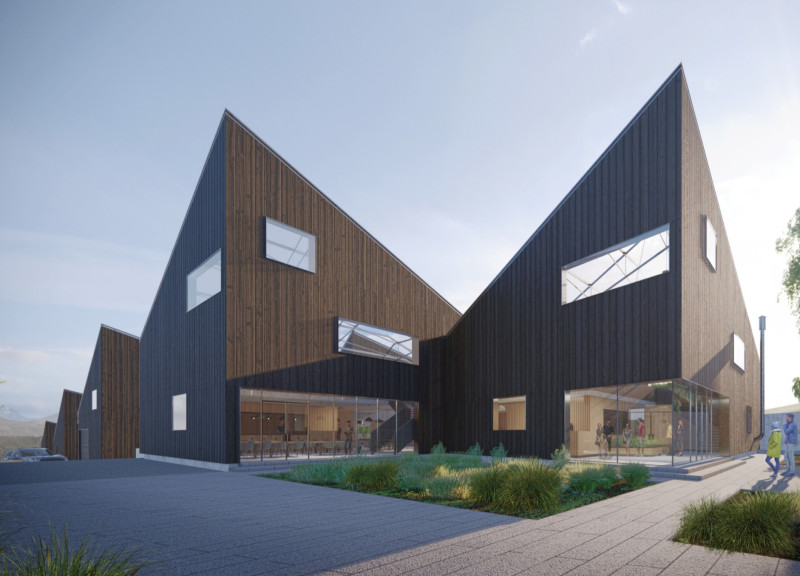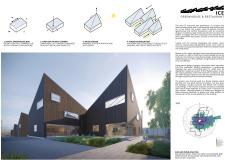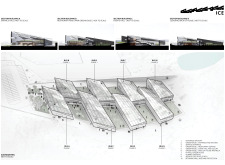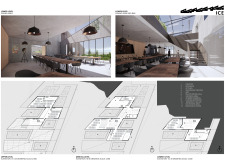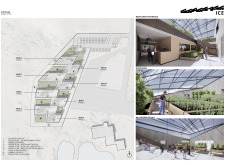5 key facts about this project
At its core, the project represents a commitment to sustainable architecture that encourages community engagement. By incorporating a greenhouse within a dining facility, the design allows patrons to experience fresh, locally sourced ingredients. This focus on agronomy not only supports the region's farmers but also creates a direct connection between the consumer and the agricultural process, fostering greater awareness of food sources and sustainability.
The architectural design is characterized by its organic integration with the landscape. Careful consideration of the site's topography results in a structure that appears to emerge naturally from its surroundings. The staggered rooflines and carefully placed volumes create varied spatial experiences while optimizing sunlight for plant growth. This design choice not only enhances the aesthetic quality of the building but also plays a crucial role in its functionality, especially given Iceland's unique climate.
Architectural elements within the project reflect a commitment to natural materials and energy efficiency. The predominant use of wood for cladding contributes to a warm, inviting atmosphere while ensuring a solid thermal performance. Large expanses of glass are strategically placed throughout the design, promoting natural light while offering unobstructed views of the surrounding landscape. This transparency serves to connect the interior spaces with the exterior environment, allowing visitors to feel an intrinsic link to the natural world outside.
Concrete forms the backbone of the structural framework, providing durability and strength, while steel components ensure minimal visual obstruction. Each material is selected not only for its functional properties but also for its ability to resonate with the overall design narrative of merging architecture with nature. The careful choice of materials enhances the building’s sustainability profile while ensuring a timeless aesthetic.
Unique design approaches are prevalent in the project's conceptualization. The flexible interior layout allows for multifunctional spaces that can adapt to various community needs. The dining area, for example, is positioned adjacent to the greenhouse, offering diners a unique experience of enjoying meals prepared with freshly harvested ingredients. Additionally, movable planters within the greenhouse facilitate diverse growing conditions and enhance the interactive experience for visitors, inviting them to engage with the growing process firsthand.
The incorporation of community-centric spaces within the design fosters connections among visitors and encourages educational opportunities. Workshops and events within the multipurpose hall promote discussions around sustainability and food production, reinforcing the restaurant's role as a community hub. This focus on interaction emphasizes the building's function beyond mere aesthetics, positioning it as a vital part of the social fabric of the area.
Overall, the ICE Greenhouse and Restaurant represents a significant exploration of architecture that prioritizes sustainability, community engagement, and the enjoyment of nature. Its thoughtful design addresses practical needs while also creating a welcoming environment that celebrates the relationship between people, food, and the ecological systems that support them. For those interested in the intricate details of this project, including architectural plans, sections, and design ideas, further exploration of the presentation is encouraged to gain deeper insights into this innovative architectural endeavor.


